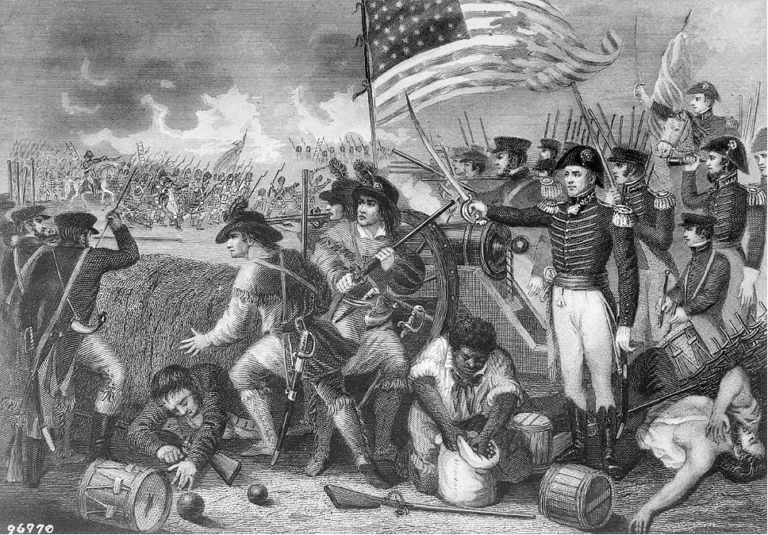The War of 1812 Explained
The Anglo-American War (also known as the War of 1812 because of the year in which it began) was a conflict fought between the United Kingdom and the United States of America between June 1812 and February 1815.

The War of 1812 arose from trade tensions between the young United States and the British Empire while the Napoleonic Wars were being fought in Europe. Since 1803, US trade had been affected by the British blockade of French ports. Tensions between the United States and Great Britain, which began with American independence in 1776, escalated in the early decades of the 19th century for several reasons. In 1807, the Royal Navy imposed tighter trade restrictions on the United States, while the forced conscription of American sailors widened the rift and fueled rivalry with Napoleonic France. Another point of contention was the expansionist ambitions of the United States, which wanted to occupy some territory in what now south-eastern Canada is. Control of the St. Lawrence River, the main trade route between Europe and the Great Lakes region, was a long-standing American ambition dating back to the early years of the Revolutionary War and supported by powerful economic interests in the Northwest. In the first decade of the nineteenth century, the United States attempted several military campaigns against the Shawnee, Wyandot, Lenape, Miami, Potawatomi, and Kickapoo Indians who lived in the Northwest Territories.
The US Declares War On Great Britian
The Shawnee chief Tecumseh had played a decisive role in resisting the Americans. In 1811, Tecumseh had united all the Indian tribes and formed a defensive alliance with the British: a gesture the Americans saw as an act of defiance. Tensions had reached a point of no return and the United States decided to declare war on Great Britain, which was seen as an obstacle to the state’s prosperity and its economic and political freedom. The decision was a complicated and controversial one, made largely under pressure from a group of young Congressmen known as the ‘War Hawks’, who wanted further US expansion. The states of Connecticut, Rhode Island and Massachusetts voted against the conflict, even though they were the ones most affected by the restrictions on maritime trade and the forced conscription of sailors.
On 18 June, the conflict formally began and was divided into three distinct theatres: at sea, warships and privateers from both sides attacked the other’s merchant marine, while the British imposed a naval blockade and conducted repeated amphibious raids along the east coast of the United States; on the Canadian border, both sides fought a series of land and sea battles (in the Great Lakes and St. Lawrence region), also deploying contingents of Native Americans recruited from the allied population; secondly, the British conducted an amphibious campaign along the southern coast of the United States, culminating in the Battle of the Great Lakes. Thirdly, the British conducted an amphibious campaign along the southern coast of the United States, culminating in the Battle of New Orleans (8 January 1815), the final confrontation of the war. The Americans fielded an army of 7,000 men, which grew to over 35,000 by the end of the conflict, while the British began the conflict with around 5,000 men, which grew to almost 50,000 by the end. In addition, there were about 10,000 Native Americans allied with the British.
Continued Conflict
In the early stages of the war, the Americans lost several battles: at Fort Mackinac, Fort Dearborn, Frenchtown, while also losing control of the strategic Fort Meigs and, above all, the city of Detroit. Things were no better on the seas and waterways. After a year of conflict, the Battle of Lake Erie in September 1813 seemed to turn the tide of the war with a US naval victory. The British suffered from the distance to the motherland for supplies and, above all, from the weakness of their local Indian allies, who were often difficult to manage strategically.
In August 1814, however, the British captured Washington, where they burned the White House and the Capitol in a great fire and bombed Baltimore. It was here that the American resistance rallied and the decisive battle of the war was fought. The British tried to take the city and bombarded it from the sea. The Americans managed to hold out and the main fort defending the city’s harbor, Fort McHenry, never fell into British hands. Without naval support, the British were defeated in a pitched battle. It was during this event that writer and lawyer Francis Scott Key wrote a poem entitled ‘Defense of Fort McHenry’, which later became the words to the US national anthem ‘The Star-Spangled Banner’.
Conclusion
The conflict-weary British joined the Americans for peace talks in the Belgian city of Ghent. The negotiators agreed to return to the status quo ante bellum, with no changes to borders. Both sides signed the Treaty of Ghent on 24 December 1814. The next and final step would be the formal ratification of the treaty by both governments. The results of the treaty arrived too late on American soil, where there was time for a final battle to be fought at New Orleans in January 1815, in which the Americans won a resounding victory. Hostilities officially ended in February 1815.
